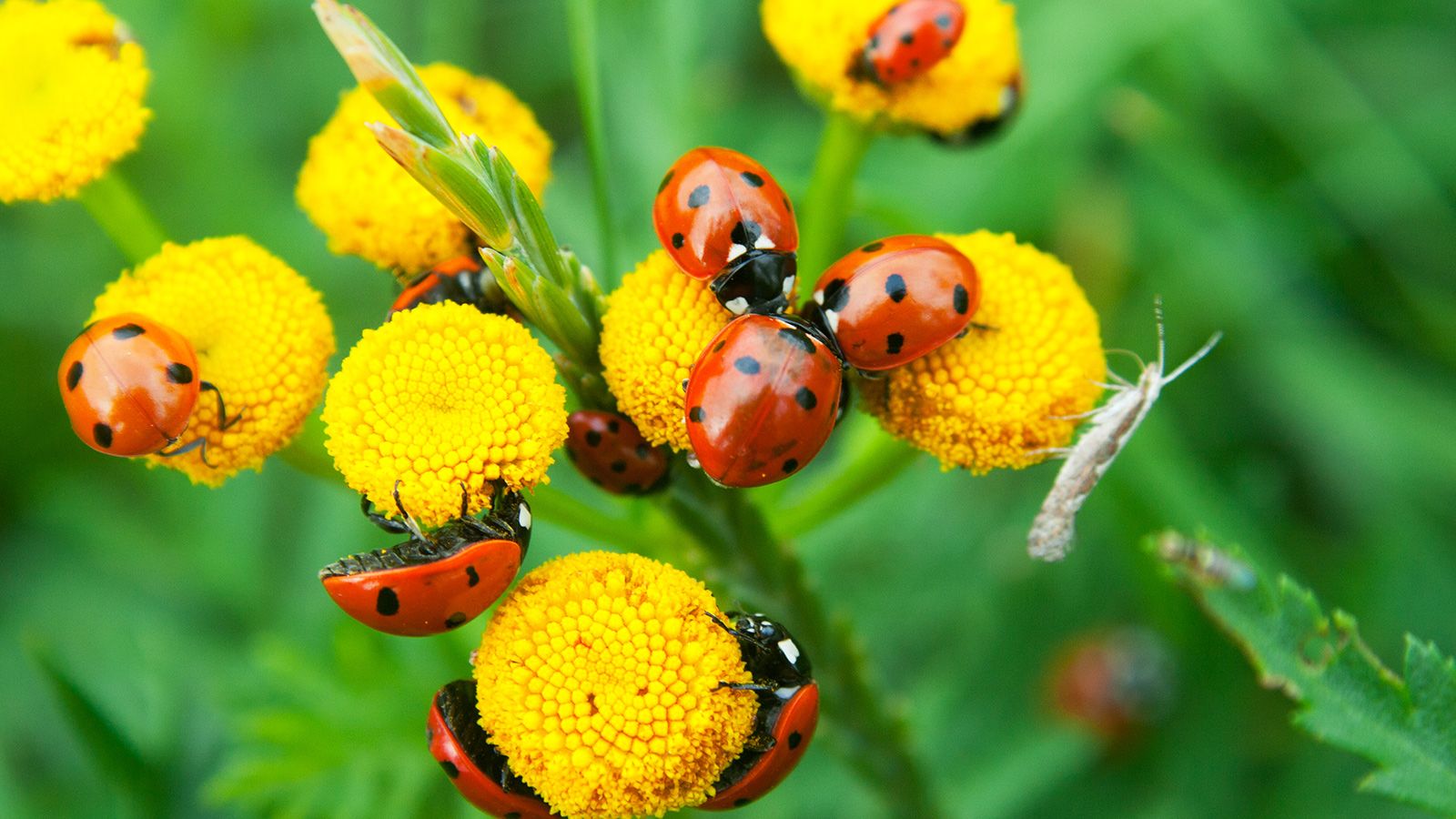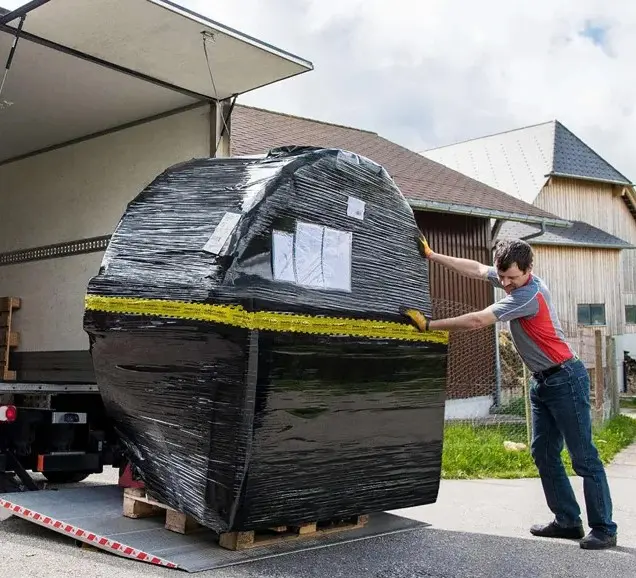Thank you for your feedback!
We will contact you shortly
Free consultation
Enter your phone number and we will call you back for a consultation on any moving and storage services
Eco-friendly Garden at Your New Home
In today's environmentally conscious world, many homeowners are embracing the idea of cultivating an eco-friendly garden that enhances their property's beauty and contributes to a healthier planet. But did you know your garden can be a thriving ecosystem teeming with life? By attracting beneficial insects like ladybugs, lacewings, and hoverflies, you can keep pesky garden pests under control naturally, reduce reliance on chemical pesticides, and create a haven for pollinators like bees and butterflies.

What are Beneficial Insects?
Though the term "beneficial insects" might sound unfamiliar, these tiny creatures play a vital role in maintaining your garden's ecological balance. They act as natural predators, devouring common garden pests like aphids, caterpillars, and whiteflies. Additionally, pollinators like bees and butterflies are essential for the reproduction of many plants, ensuring a bountiful harvest and vibrant blooms in your garden.
Moving to a New Home and Eco-Friendly Garden Design: If you've recently moved to a new home or are planning to do so, it's the perfect opportunity to design an eco-friendly garden from the ground up. Incorporating sustainable practices into your garden design can make a significant difference in reducing your environmental footprint. Start by choosing the right plants and flowers that not only look beautiful but also serve a purpose in attracting beneficial insects.
Creating a Haven for Beneficial Insects
1. Plant Diversity is Key:
Monoculture gardens with a single plant species are not very attractive to beneficial insects. Instead, create a diverse garden with a variety of flowering plants that bloom throughout the season. This ensures a continuous food source of pollen and nectar for beneficial insects.
Here are some pollinator-friendly flowering plants to consider:
- Early Bloomers: Crocuses, pansies, violets
- Spring and Summer Bloomers: Columbine, coneflowers, poppies, yarrows
- Fall Bloomers: Asters, goldenrods, sedums
2. Herbs as Havens:
Don't underestimate the power of herbs! Many herbs like dill, fennel, mint, and oregano not only add a delightful touch to your culinary creations but also attract beneficial insects with their fragrant blooms.
3. Beneficial Insectary Plants:
Certain plants are specifically known for attracting beneficial insects. Here are a few to add to your garden:
- Ladybugs: Ladybugs love to munch on aphids. Plant marigolds, cosmos, and dandelions to attract them.
- Lacewings: Lacewings are beneficial predators that enjoy a diet of aphids, mealybugs, and scales. Attract them with dill, fennel, and yarrow.
- Hoverflies: These tiny flies resemble wasps and help control aphid populations. Cosmos, cilantro, and alyssum are some of their favorites.
4. Provide Shelter and Overwintering Sites:
Beneficial insects need a place to hide from predators and harsh weather conditions. Create a habitat for them by incorporating elements like:
- Leaf litter piles: Leaf litter provides a cozy winter refuge for insects like ladybugs and ground beetles.
- Unmowed areas: Allow a small section of your lawn to grow wild. This provides shelter for insects and encourages the growth of wildflowers they love.
- Brush piles: Create small brush piles using branches and twigs to provide overwintering habitat for insects and small mammals.
5. Water is a Must:
Just like any living creature, beneficial insects need access to water. Provide a shallow dish filled with pebbles or gravel for them to drink from safely.
6. Welcome Pollinators:
Pollinators like bees and butterflies play a crucial role in plant reproduction. To attract them, incorporate plenty of nectar-rich flowers with flat, open blooms that are easy for them to access. Some favorites include sunflowers, zinnias, butterfly bushes, and coreopsis.
7. Go Organic!
Avoid using chemical pesticides in your garden. These harmful chemicals not only kill beneficial insects but can also disrupt the delicate balance of your garden's ecosystem. Opt for organic pest control methods like insecticidal soap or neem oil to control pest populations.
8. Be Patient:
Building a thriving garden ecosystem teeming with beneficial insects takes time. Don't be discouraged if you don't see results overnight. By consistently implementing these practices, you'll gradually create a haven that attracts a variety of beneficial insects and promotes a healthy garden environment.
Sustainable Gardening Practices
Sustainable gardening goes hand-in-hand with creating an eco-friendly haven for beneficial insects. Here are some practices you can incorporate:
Mulch your garden beds: Mulching helps retain moisture in the soil, suppresses weeds, and provides a cool, damp habitat for beneficial insects like ground beetles.
Compost kitchen scraps and yard waste: Composting not only reduces waste but also creates nutrient-rich compost that feeds your plants and improves soil health, creating a more hospitable environment for beneficial insects.
Harvest rainwater: Use rain barrels to collect rainwater from your roof. This precious resource can then be used to irrigate your garden, reducing reliance on tap water and promoting water conservation.
Choose native plants: Native plants are adapted to your local climate and require less water, fertilizer, and pesticides compared to non-native species. Additionally, they often provide a valuable food source and habitat for native pollinators and beneficial insects.
Attract beneficial birds: Birds like chickadees, wrens, and swallows are natural predators of many garden pests. Encourage them to visit your garden by installing birdhouses and planting native berry-producing shrubs that provide them with food and nesting sites.
Practice crop rotation: Rotating your crops each season helps prevent pest and disease build-up in the soil. It also promotes soil health and fertility by replenishing nutrients and preventing depletion of specific minerals.
Companion planting: Companion planting is a technique where you strategically plant beneficial species together. Certain plants can deter pests for their neighbors, attract beneficial insects, or improve overall plant growth. For example, planting marigolds near tomatoes can help deter tomato hornworms, while nasturtiums planted near squash can attract aphids away from your squash plants.
Integrated Pest Management (IPM):
Instead of reaching for chemical pesticides at the first sign of trouble, implement Integrated Pest Management (IPM) strategies. This approach focuses on prevention and monitoring pest populations. Start by identifying the specific pest and its lifecycle. Use non-chemical methods like handpicking pests, encouraging natural predators, or using insecticidal soap or neem oil for targeted control if necessary. Remember, a healthy garden ecosystem with a diverse population of beneficial insects is less susceptible to pest outbreaks in the first place.
Observe and Learn:
Creating a thriving garden ecosystem is an ongoing process. Observe your garden regularly and take note of the insects present, both beneficial and harmful. Learn to identify common garden pests and beneficial insects. This knowledge will help you tailor your gardening practices and create a more balanced environment where beneficial insects can thrive and keep your garden healthy naturally.
By incorporating these sustainable practices, you can create a beautiful, healthy, and ecologically-friendly garden that attracts beneficial insects and promotes biodiversity. Remember, a thriving garden ecosystem benefits not only your plants but also the local environment and the countless creatures that call it home.

Daria Golovaneva
Customer Support
My job is to inform you about the status of your move. I will also be happy to answer any of your questions: the time of arrival of the team, payment methods, questions about the storage of your belongings, delivery time, and others. Feel free to contact me and I will help you with any question!









